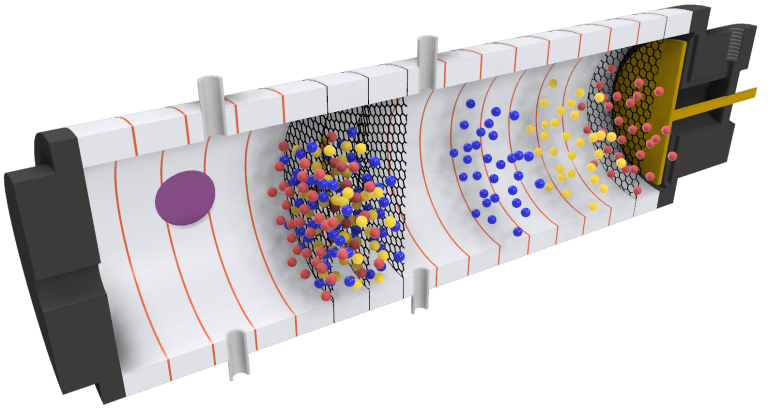Basic principle of Ion mobility spectrometry (IMS)

The principle of ion mobility spectrometry is based on the fact that ions generated under normal pressure drift in an electric field against the direction of flow of a gas. Ions of different mass and/or structure reach different average drift velocities and are separated from each other until they hit a detector one after the other in time. The ratio of the ion velocities (v) to the strength of the electric field (E) is known as ion mobility (K) and the separation of these ions over a certain distance on the basis of the different drift velocities is known as ion mobility spectrometry.
The setup of an IMS drift tube and the measurement procedure are shown in the following picture gallery. The drift tube consists of an ionisation area and a drift area, which are separated from each other by an electrical switching grid. The ions generated in the ionisation area reach an electrical grid, which lets a small part of the ions into the drift area at certain times. Due to the electric field, the ions with different mass and/or structure reach different drift velocities and are therefore registered by the detector at different times.









